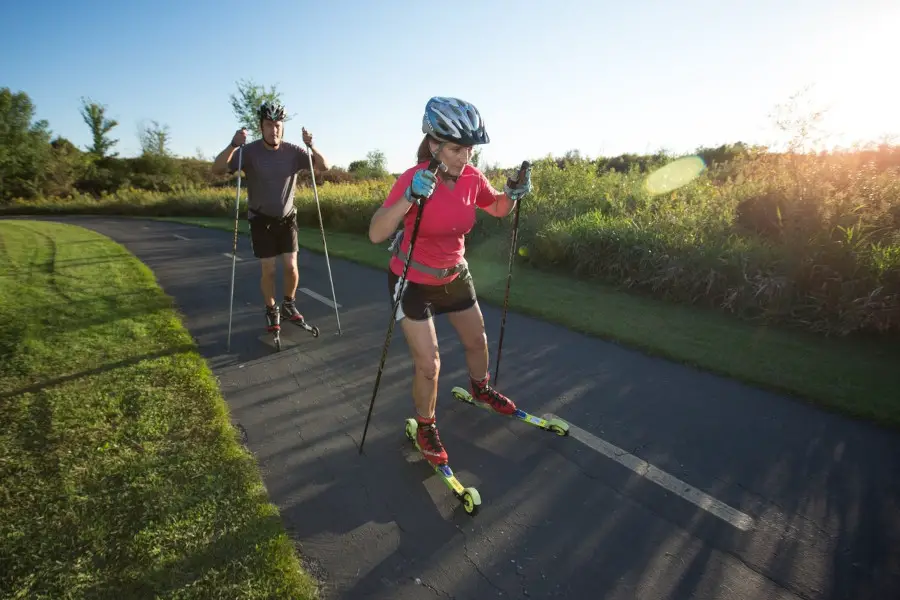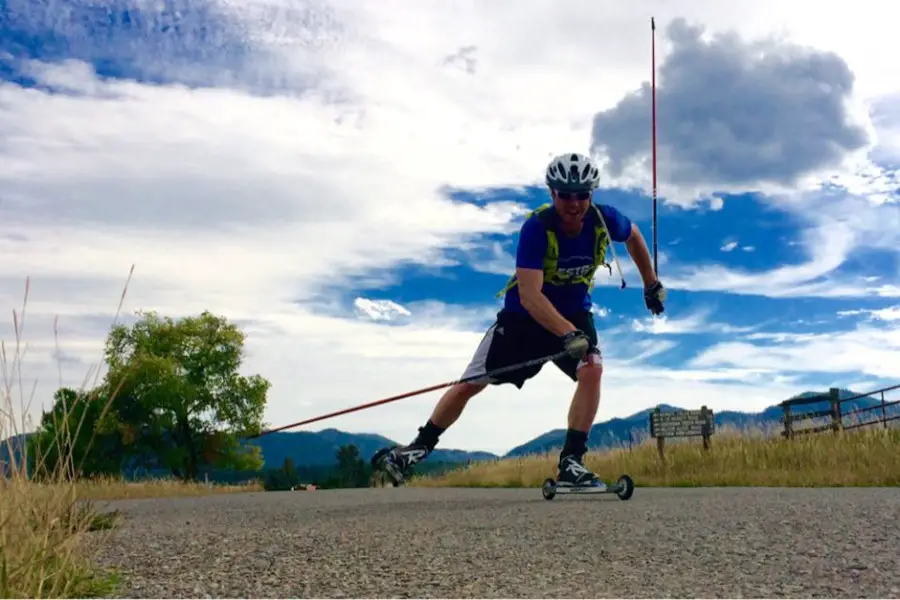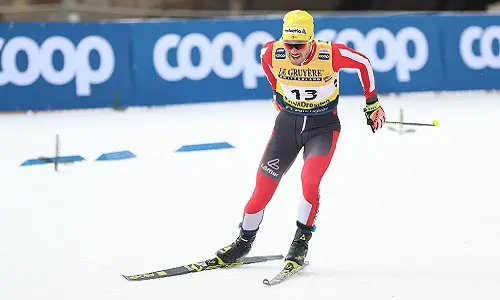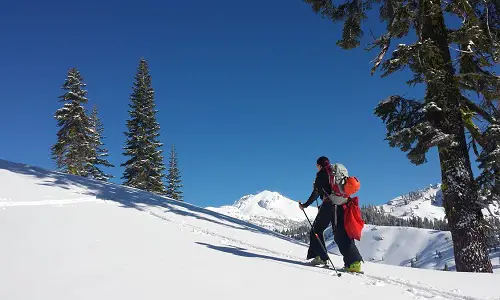Table of Contents
It all begins with that exhilarating feeling – the wind brushing across your face as you glide on your roller skis, feeling like you own the world. But endings are always a bit tricky, and stopping on roller skis might be the million-dollar question you’ve been looking for your entire life. Possibly, you’ve even got bruised in the attempt of exploring certain tricks to slow down while roller skiing. Well, it’s nothing to be embarrassed about; we’ve all been there. But don’t worry, and stick with us till the end. We’re sure you’re bound to learn some foolproof tricks on stopping roller skis without getting yourself severely injured.
Quite similar to skiing on the snow, roller skiing is particularly enjoyed by enthusiasts who yearn to master ski fitness. It is also a great sport that demands physical exertion to tone out muscles targeting the entire body. But most of all, roller skiing is an excellent way to practice cross-country skiing as you rush through open terrain and meadows. As an amateur, you can join a skiing club for proper training, or you can practice in local parks with a safe side area.
Do Roller Skis Have Brakes?
It depends on the brand and the model. Certain roller skis feature fixed brake systems or electronic disk brakes that lower the speed by increasing friction. Brake pads are also employed to rub on the pavement and stop the wheels by tugging at a line or a rope in connection with the skis.
Another great addition to some roller skis is speed reducers. Going downhill on a slope can tremendously increase one’s speed and greatly increases the risk of toppling over. In such cases, speed reducers aim to reduce speed by enhancing resistive forces. They come in handy for controlling overly accelerated wheels for a better secure grip.
Unfortunately, at times, your brakes might fail, and speed reducers might not give instant results. Therefore, it is best to learn some stopping techniques to combat any emergency situations and save your health. At this point, it is important to remember that not many roller skis come equipped with brakes, speed reducers, or such features. Local models and economical brands often lack in this regard, so you must master some stopping tricks to avoid falling over.
Quick Tips for Beginners
One thing’s for sure, roller skiing with wheels definitely guarantees a smooth run with enhanced speed and momentum. So how do you get to stop these wheels? Smart decision-making paired up with basic physics is your best bet. Since safety is the prime concern, we’ve listed out a simple technique to stop your roller skis and greatly diminish the speed.
- Don’t speed up your roller skis and let the speed lessen gradually.
- Transfer your weight from one foot to the other while keeping them outward to increase friction.
- Make sure your skis do not touch each other.
- Keep your knees bent and place your arms or ski poles forward.
- Align your hips and shoulders in the center to maintain equilibrium.
- Put all your body weight onto your feet alternatingly. This will allow the skis to slow down and come to a halt eventually with the help of ski poles.

Stopping Techniques for Roller Skis
In case you face a road crossing, a car, or a little kid comes in your way, you would definitely need to stop instantly. And no, by stopping, we do not mean falling off with wounds and bruises, bumping into a person, or getting into an accident. Allow us to walk you through a concise description of how to stop on roller skis.
There are various techniques to do so, so suit yourself and practice the ones you feel most comfortable with. A solid grip and good balance are key factors for preventing injuries.
Snowplow or Wide Stance Stop
Since a real snowplow can only be mastered in snow, we’d prefer to name this technique the wide stance stop. Keep the roller skis parallel and wide apart from each other. Maintain a balanced posture, keeping your hips and shoulders in the midline while bending your knees to transfer complete weight on your feet.
Now, all you have to do is propel the roller skis outward by lowering your hips and exerting force outward. You can also alternate your feet by constantly shifting weight from one foot to another. Make sure not to angle the skis inward; rather, keep them distanced and flat. In this way, skiing on the edges of the wheels increases friction on the pavement and slows you down.

Swenor Brakes
Swenor has modified its roller skis with this amazing braking feature that distinguishes them from the rest. The brakes simplify the stopping process and are perfect for beginners because you don’t need to learn or practice much.
All you have to do is to smartly shift your weight on the brake, which resultantly stops the wheel due to friction. As the wheel slows down, the roller skis come to a halt. These brakes hold numerous applications in case of overspeeding or going downhill.
Slalom Stop
Being particularly efficient for high speeds, the slalom stop works better on wider roads. Stay low and keep your body in a leaning position as you swoosh back and forth. It’s all a matter of practice to acquire the weight shifting technique for better results.
Sharp and tight turns with greater friction on the wheels also slow one down. When you turn right, all the weight should be on the left ski and vice versa. This opposes motion by giving way to resistive forces.
Rolling into Grass
This technique is only applicable to roads where grassy areas form the sidelines. Overall, it’s pretty basic with no hard tricks. First, spot a clear grassy area when you intend to stop. Transfer your weight to the back foot and gently glide off onto the grass. As you slow down, remember to shift your weight to the front foot for better stability.
Ski poles can be used for more steadiness. Keep an eye out for gravel, rocks, or sticks in the grass that may cause you to topple over. Maintain your weight on the back ski so that it doesn’t push out from beneath you.
T- Stop
This might be a bit technical and can take a few days to practice it thoroughly. The T-stop begins with you positioning your feet in a T position. Propel the front foot outward by bending your knee and transferring all your weight on the front leg. Then, keeping the rest of the body firm, you’ll want to keep the back leg straight and firm on the ground. As you glide forth, the back leg pushes outward and slides to regain the T position.
Last Resort Techniques
Well, there’s always the possibility of failing to stop in case of emergencies. The trick is to be cautious and keep a backup plan in your mind at all times. When all else fails, you can resort to the following tricks.
Scan around to identify any grassy patches because it is always safer to fall on the grass rather than hard, rocky ground. Hit the ground with a solid roll, and you’ll end up not hurting yourself at all. If there are no grassy areas in sight, look around for some trees or light posts on the pavement. Catch it with your arm and hug it to release your momentum.

Conclusion
Now that you know the basics, find a wide, flat, and smooth surface with minimal crowds and get practicing! While the snowplow is definitely the easiest and commonest technique, we’d advise you to work on 2 to 3 other ones as well. This will greatly enhance your control of roller skis while maintaining balance at the same time.
You must also equip yourself with all the necessary safety gear while practicing. A lot of stopping techniques involve falling over on pavements and brushing across the grass, so it’s best to wear a helmet, elbow and knee pads for protective reasons. Being an amateur, you might find it hard learning these stopping tricks, but once you get the hang of it, roller skiing will end up being your favorite sport.


